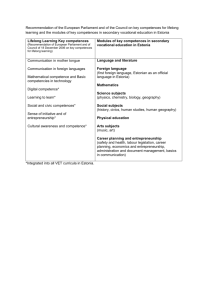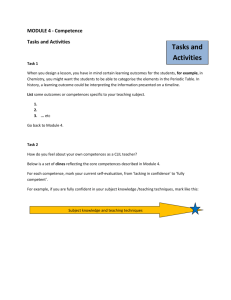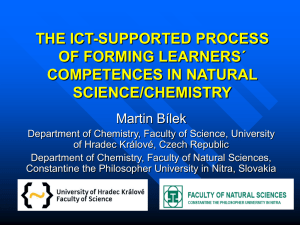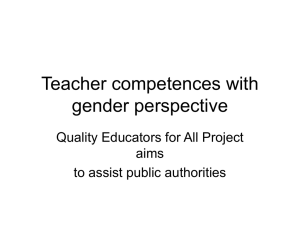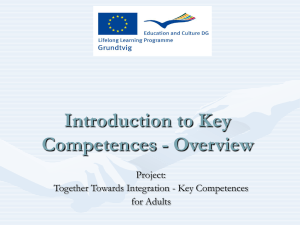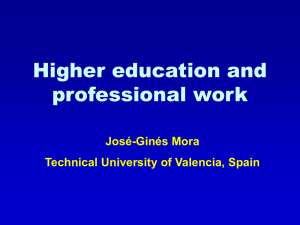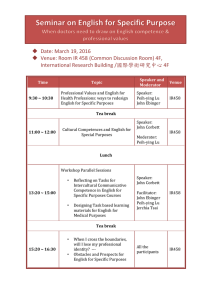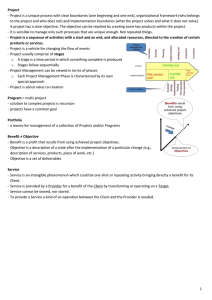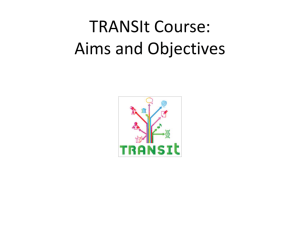The eight domains of key competences
advertisement
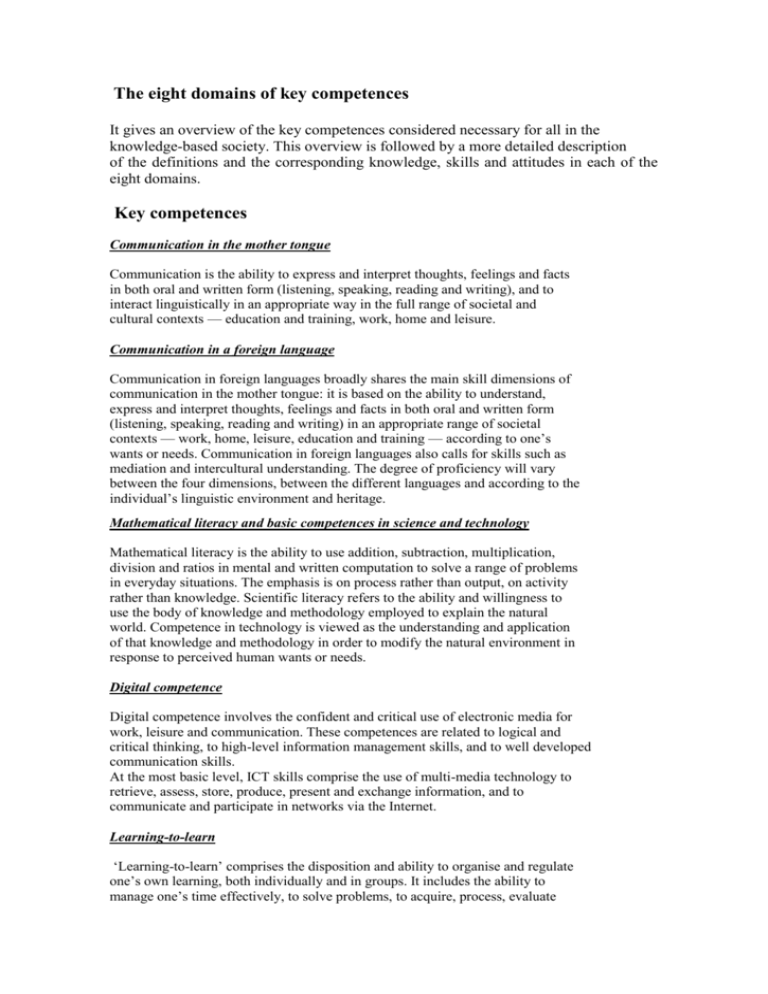
The eight domains of key competences It gives an overview of the key competences considered necessary for all in the knowledge-based society. This overview is followed by a more detailed description of the definitions and the corresponding knowledge, skills and attitudes in each of the eight domains. Key competences Communication in the mother tongue Communication is the ability to express and interpret thoughts, feelings and facts in both oral and written form (listening, speaking, reading and writing), and to interact linguistically in an appropriate way in the full range of societal and cultural contexts — education and training, work, home and leisure. Communication in a foreign language Communication in foreign languages broadly shares the main skill dimensions of communication in the mother tongue: it is based on the ability to understand, express and interpret thoughts, feelings and facts in both oral and written form (listening, speaking, reading and writing) in an appropriate range of societal contexts — work, home, leisure, education and training — according to one’s wants or needs. Communication in foreign languages also calls for skills such as mediation and intercultural understanding. The degree of proficiency will vary between the four dimensions, between the different languages and according to the individual’s linguistic environment and heritage. Mathematical literacy and basic competences in science and technology Mathematical literacy is the ability to use addition, subtraction, multiplication, division and ratios in mental and written computation to solve a range of problems in everyday situations. The emphasis is on process rather than output, on activity rather than knowledge. Scientific literacy refers to the ability and willingness to use the body of knowledge and methodology employed to explain the natural world. Competence in technology is viewed as the understanding and application of that knowledge and methodology in order to modify the natural environment in response to perceived human wants or needs. Digital competence Digital competence involves the confident and critical use of electronic media for work, leisure and communication. These competences are related to logical and critical thinking, to high-level information management skills, and to well developed communication skills. At the most basic level, ICT skills comprise the use of multi-media technology to retrieve, assess, store, produce, present and exchange information, and to communicate and participate in networks via the Internet. Learning-to-learn ‘Learning-to-learn’ comprises the disposition and ability to organise and regulate one’s own learning, both individually and in groups. It includes the ability to manage one’s time effectively, to solve problems, to acquire, process, evaluate and assimilate new knowledge, and to apply new knowledge and skills in a variety of contexts — at home, at work, in education and in training. In more general terms, learning-to-learn contributes strongly to managing one’s own career path. Interpersonal and civic competences Interpersonal competences comprise all forms of behaviour that must be mastered in order for an individual to be able to participate in an efficient and constructive way in social life, and to resolve conflict where necessary. Interpersonal skills are necessary for effective interaction on a one-to-one basis or in groups, and are employed in both the public and private domains. Entrepreneurship Entrepreneurship has an active and a passive component: it comprises both the propensity to induce changes oneself and the ability to welcome, support and adapt to innovation brought about by external factors. Entrepreneurship involves taking responsibility for one’s actions, positive or negative, developing a strategic vision, setting objectives and meeting them, and being motivated to succeed. Cultural expression ‘Cultural expression’ comprises an appreciation of the importance of the creative expression of ideas, experiences and emotions in a range of media, including music, corporal expression, literature and plastic arts.
